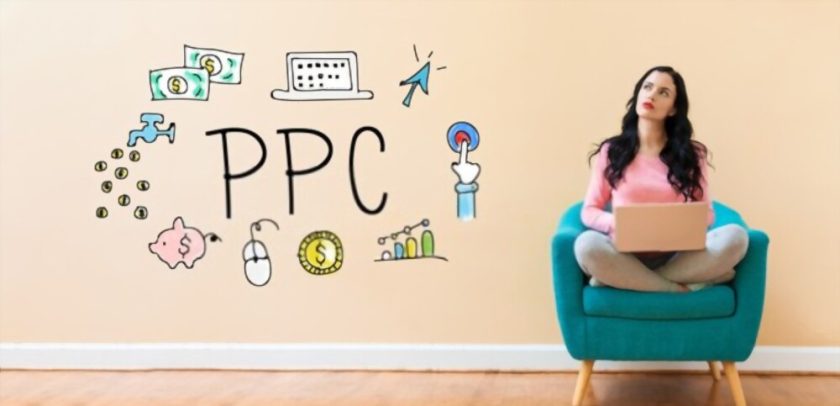Getting consumers to visit your website is far easier than actually having them buy something. In e-commerce, a good conversion rate (items sold as a percentage of total visits to the product page) requires optimizing many different aspects of your website and marketing plan.
Clicks and converted clicks are the two basic metrics used to measure advertising performance. Converted clicks are those that result in a conversion action, such as a purchase or subscription.
Pay per click (PPC)
Pay per click (PPC) is an effective online marketing technique that can drive traffic and sales for your business. It’s easy to get started, and it can deliver a high return on investment (ROI) for your business. It can also help you reach more targeted audiences, and it can be used in conjunction with other marketing strategies.
PPC ads can be displayed across a variety of platforms, including search engines and social media. They are typically placed above or next to organic results and can appear as text, image, video, or product listings. The most popular PPC platform is Google Ads, which has a variety of ad types and targeting options. You can even use geotargeting to deliver ads that are relevant to your audience’s location.
The key to successful Pay Per Click Packages is to know your audience and understand the products and services you offer. This will enable you to develop a comprehensive keyword list and target them with appropriate messaging. You can then track campaign performance and identify opportunities to improve your results. For example, you might find that one type of ad is performing better than another. You can then change your ad copy and bids to improve performance.
When it comes to choosing a platform for your business, it’s important to choose one that offers a good fit for your budget and business needs. For example, you might want to consider a platform with a lower price point or that supports your mobile devices. It’s also crucial to have a solid understanding of the basics of PPC, as this will help you avoid costly mistakes and maximize your ROI.
Search engine optimization (SEO)
Search engine optimization, or SEO, is the process of optimizing a website or web page to improve its visibility in search engine results pages (SERPs). It can also help increase traffic to a website and brand awareness. By using keywords that are relevant to the products or services offered, businesses can target potential customers who are searching for those terms.
Search engines are a valuable tool for businesses, and they can provide a steady stream of traffic and sales. However, the world of search marketing is constantly evolving, and it’s important to stay up-to-date with these changes. To do so, you need to understand how search engines work, including their algorithms and how they determine what information should appear in a SERP.
The goal of a search engine is to provide users with the most relevant information possible. To do this, they use bots to crawl websites and download their content. They then store the pages they find in a database called an index. When a user conducts a search, the engine compares the content of the query with the content in the index to determine which pages are most relevant and displays those on the SERP.
Social media marketing
Social media marketing (SMM) uses social networking platforms to promote a brand and drive sales. Its main components include creating and maintaining social media accounts, listening to and engaging with followers, analyzing data and results, and running social media ads. Social media marketing can be used to increase brand awareness, improve customer service, and drive website traffic. It can also help you identify and reach new customers.
Unlike traditional marketing, social media marketing requires frequent updates and entertaining content that is easy to share. People spend a lot of time on their social media accounts, and they want to see new posts that are interesting and informative. If your content is too “advertise-y”, they will quickly scroll past it.
In addition, social media allows companies to interact directly with their audience. This can be useful for improving customer service, answering questions, and resolving issues. However, it is important to keep in mind that social media can also be a tool for criticism, and negative reviews can damage a company’s reputation. Therefore, it is crucial to have an effective crisis management plan in place.
Email marketing
Email is an effective tool for e-commerce businesses that want to increase online sales, as well as brick-and-mortar stores looking to drive in-store traffic. By creating an engaging email and using a call-to-action that drives clicks to the website, you can boost your sales and customer relationships. Email marketing is also a great way to test and learn what works with your audience, allowing you to optimize future campaigns.
When it comes to driving sales with email, you need to focus on establishing trust and providing value. Sending emails that are useful and informative to your subscribers will help them become familiar with your business, and they’ll think of it first when they need your services. Emails can be used to share valuable tips, promotions, and special offers that will build trust and brand loyalty.
One of the best ways to drive sales with email is to use upselling and cross-selling techniques. This is an excellent way to increase the average order value and generate more revenue. For instance, you can highlight a pair of shoes that go well with the coat or jacket your customer just purchased. You can also send emails that feature product roundups or collections that are popular with your customers.
Thanks for visiting top10collections





